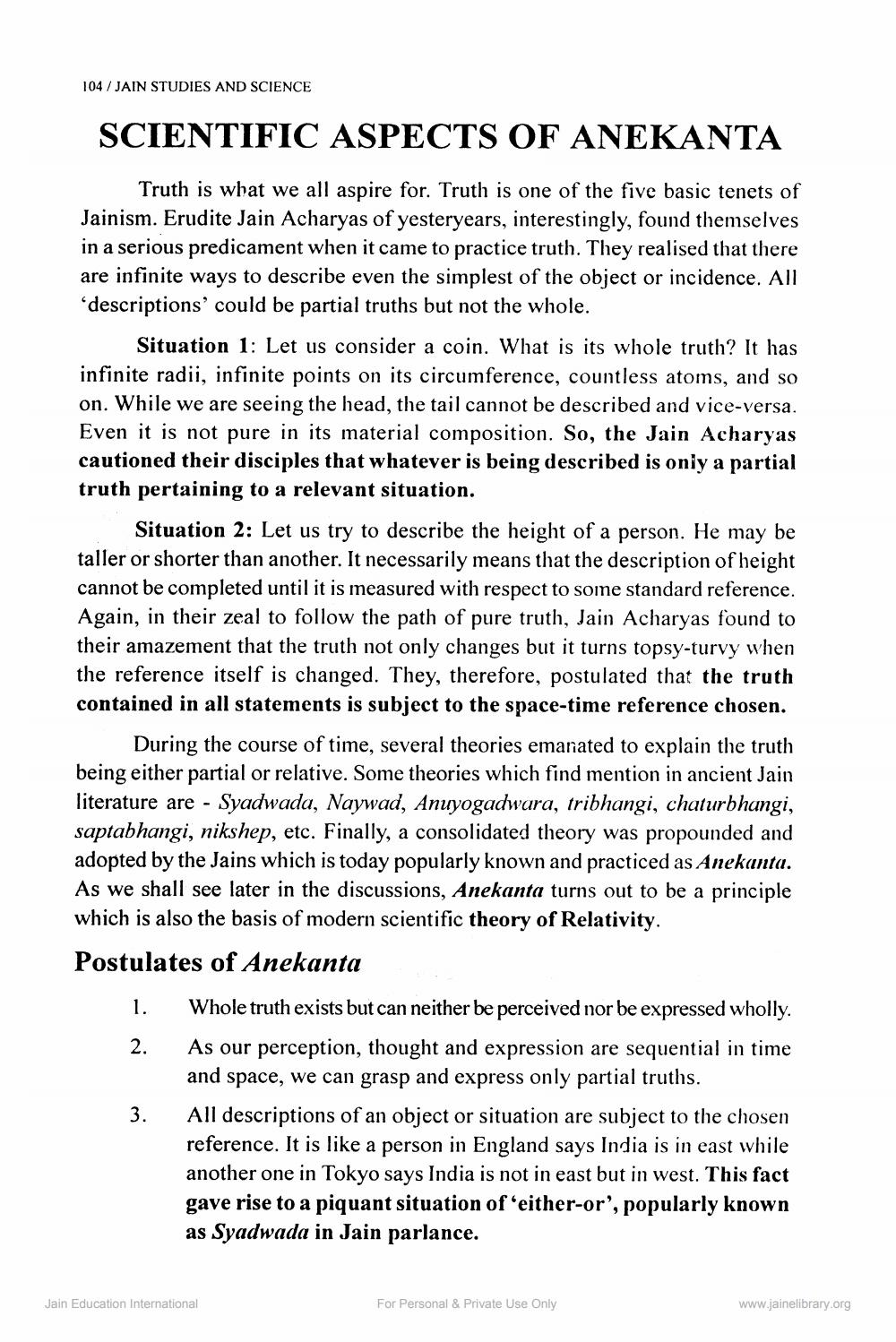________________
104 / JAIN STUDIES AND SCIENCE
SCIENTIFIC ASPECTS OF ANEKANTA
Truth is what we all aspire for. Truth is one of the five basic tenets of Jainism. Erudite Jain Acharyas of yesteryears, interestingly, found themselves in a serious predicament when it came to practice truth. They realised that there are infinite ways to describe even the simplest of the object or incidence. All 'descriptions' could be partial truths but not the whole.
Situation 1: Let us consider a coin. What is its whole truth? It has infinite radii, infinite points on its circumference, countless atoms, and so on. While we are seeing the head, the tail cannot be described and vice-versa. Even it is not pure in its material composition. So, the Jain Acharyas cautioned their disciples that whatever is being described is only a partial truth pertaining to a relevant situation.
Situation 2: Let us try to describe the height of a person. He may be taller or shorter than another. It necessarily means that the description of height cannot be completed until it is measured with respect to some standard reference. Again, in their zeal to follow the path of pure truth, Jain Acharyas found to their amazement that the truth not only changes but it turns topsy-turvy when the reference itself is changed. They, therefore, postulated that the truth contained in all statements is subject to the space-time reference chosen.
During the course of time, several theories emanated to explain the truth being either partial or relative. Some theories which find mention in ancient Jain literature are - Syadwada, Naywad, Anuyogadwara, tribhangi, chaturbhangi, saptabhangi, nikshep, etc. Finally, a consolidated theory was propounded and adopted by the Jains which is today popularly known and practiced as Anekanta. As we shall see later in the discussions, Anekanta turns out to be a principle which is also the basis of modern scientific theory of Relativity. Postulates of Anekanta 1. Whole truth exists but can neither be perceived nor be expressed wholly.
As our perception, thought and expression are sequential in time and space, we can grasp and express only partial truths. All descriptions of an object or situation are subject to the chosen reference. It is like a person in England says India is in east while another one in Tokyo says India is not in east but in west. This fact gave rise to a piquant situation of “either-or', popularly known as Syadwada in Jain parlance.
Jain Education International
For Personal & Private Use Only
www.jainelibrary.org




